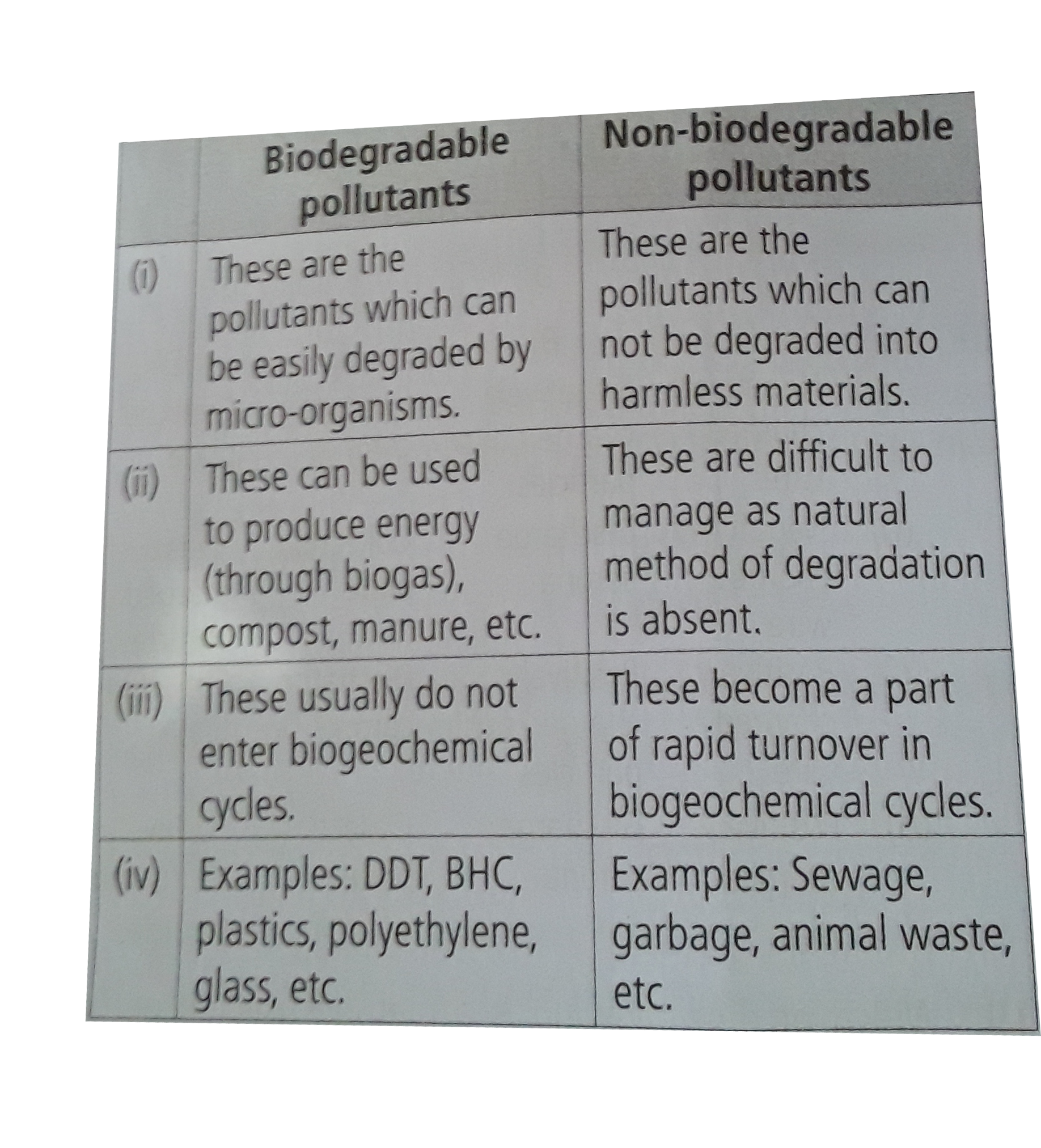Biodegradable pollutants is
Plastic
Asbestos
Sewage
Mercury
The correct Answer is:C
Step-by-Step Solution:
1. Understanding the Question: The question asks for an example of a biodegradable pollutant from the given options: plastic, asbestos, sewage, and mercury.
2. Defining Biodegradable Pollutants: Biodegradable pollutants are substances that can be broken down by natural processes, typically by the action of microorganisms like bacteria. This breakdown results in simpler, non-toxic substances.
3. Analyzing the Options:
- Plastic: This is a synthetic material that does not decompose easily and can persist in the environment for hundreds of years. Therefore, it is a non-biodegradable pollutant.
- Asbestos: This is a mineral fiber that is also non-biodegradable and poses health risks when inhaled. It does not break down naturally.
- Sewage: This consists of wastewater that contains organic matter such as human waste, food scraps, and other biodegradable materials. It can be broken down by microorganisms, making it a biodegradable pollutant.
- Mercury: This is a heavy metal that is toxic and does not decompose. It accumulates in the environment and is considered a non-biodegradable pollutant.
4. Conclusion: Among the options provided, sewage is the only biodegradable pollutant because it can be decomposed by microorganisms into simpler substances over time.
5. Final Answer: The correct option is sewage.
---
- Plastic: This is a synthetic material that does not decompose easily and can persist in the environment for hundreds of years. Therefore, it is a non-biodegradable pollutant.
- Asbestos: This is a mineral fiber that is also non-biodegradable and poses health risks when inhaled. It does not break down naturally.
- Sewage: This consists of wastewater that contains organic matter such as human waste, food scraps, and other biodegradable materials. It can be broken down by microorganisms, making it a biodegradable pollutant.
- Mercury: This is a heavy metal that is toxic and does not decompose. It accumulates in the environment and is considered a non-biodegradable pollutant.
Topper's Solved these Questions
- BOOK - DINESH PUBLICATION ENGLISHCHAPTER - ENVIRONMENTAL ISSUESEXERCISE - Check your grasp18videos
ENVIRONMENTAL ISSUES
- BOOK - DINESH PUBLICATION ENGLISHCHAPTER - ENVIRONMENTAL ISSUESEXERCISE - Brain teasers-X145videos
ENVIRONMENTAL ISSUES
- BOOK - DINESH PUBLICATION ENGLISHCHAPTER - ECHINODERMATAEXERCISE - REVISION QUESTIONS65videos
ECHINODERMATA
- BOOK - DINESH PUBLICATION ENGLISHCHAPTER - EVIDENCES OF EVOLUTIONEXERCISE - CHECK YOUR GRASP19videos
EVIDENCES OF EVOLUTION
Similar Questions
Knowledge Check
- Question 1 - Select One
Non-biodegradable pollutants are created by
AnatureBexcessive use of resourcesChumansDnatural disasters. - Question 2 - Select One
The following table summarises the differences between biodegradable and non-biodegradable pollutants. Pick out the wrong diggerences and select the correct answer.
 A(i) and (iv)B(ii) and (iv)C(iii) and (iv)D(ii), (iii) and (iv)
A(i) and (iv)B(ii) and (iv)C(iii) and (iv)D(ii), (iii) and (iv) - Question 3 - Select One
Which of the following are true ?
I. Benzene hexachloride is a non- biodegradable pollutants .
II. Anthropogenic air pollutants are natural in origin .
III. Carbon monoxide is a primary air pollutant .
IV. Sulphur dioxide cause brown air effect during traffic congestion in cities.AI and III onlyBI and II onlyCII and III onlyDII and IV only
Non-biodegradable pollutants are created by
View SolutionNon-biodegradable pollutants are created by :
View SolutionGiven one significant difference between each of the following :
(i) Pollution and Pollutants .
(ii) Biodegradable and Nonbiodegradable pollutants .View SolutionPolythene is a non- biodegradable pollutant .
View SolutionIs DDT a biodegradable pollutant ?
View Solution

